If Insects Feel Pain, Should They Be Protected in Research?
Bees have long impressed behavioral scientist Lars Chittka. In his lab at Queen Mary University of London, the pollinators have proven themselves capable of counting, using simple tools, and learning from nestmates. What really surprised Chittka, however, were the nuances of the insects’ behavior.
In 2008, for instance, a study from Chittka’s lab looked at how bumblebees reacted to a simulated attack by a fake spider on a flower. The bumblebees later approached suspect flowers cautiously and sometimes left even spider-less flowers quickly “as if they were seeing ghosts,” Chittka recalled. By contrast, the bees were seemingly more upbeat after receiving a sugar treat.
To Chittka, these observations defy a long-held view that insects are robot-like, controlled by hard-wired cognitive programs. Rather, the bees’ behavior seemed to be influenced by subjective experience — a perception of pleasant and unpleasant. Chittka said he increasingly suspects “there’s quite a rich world inside their minds.”
Early in his career, Chittka never protested when his colleagues opened bees’ skulls and inserted electrodes to study their nervous system. But he now wonders whether such procedures might create “potentially very unpleasant situations” for the insects. Like most invertebrates — any animal without an internal skeleton — insects tend to be legally unprotected in research. Regulations intended to minimize suffering in vertebrates like rodents largely don’t apply.
Some countries have already improved the welfare of select invertebrates, such as octopus, squid, crabs, and lobster. But there’s disagreement over whether other invertebrate species — a kaleidoscopically diverse cast of animals — also deserve protection. Some scientists believe species with relatively simple brains, like insects, or perhaps even those with no central nervous system at all, also deserve ethical consideration, although the details are under debate.
None of the experts who spoke with Undark argued that research on these invertebrate species should stop. Some organisms, including widely used species of fruit flies or nematode worms, have long led to breakthroughs in genetics, cell development, and other biological processes, and have played important roles in roughly a fifth of Nobel Prizes for Physiology or Medicine that were based on animal research. Many scientists are also shifting their research from vertebrates to invertebrates to avoid ethical bureaucracy associated with animal welfare regulation.
Still, recent research is prompting some scientists to rethink traditional research ethics. As Adam Hart, an entomologist at the University of Gloucestershire, put it: “I think we are at a point where people are willing to entertain the idea that perhaps ethics isn’t just something for animals with backbones.”
The rationale to legally protect animals in scientific research typically rests on their presumed ability to feel pain and suffer — one facet of consciousness, or sentience. Nearly all animals are capable of physically detecting injuries and displaying reflexes to avoid a threat. But that doesn’t necessarily mean they experience pain, which is not just a sensory experience, but a cognitive, conscious experience of harm and suffering.
Establishing that an animal experiences pain is tricky, but there are some behavioral clues that go beyond simple reflexes — including coping mechanisms like nursing wounds and learning from previous injuries. “It’s kind of complicated,” said animal behaviorist Jennifer Mather of the University of Lethbridge. “But we can get a decent idea of whether they have something that we would call pain if it were in us.”
Scientists have long observed that vertebrates display behaviors consistent with a conscious experience of pain, like avoiding places where they’ve been harmed or withdrawing from social activity. Legislation to protect vertebrates dates back to at least 1876, when British parliament passed the Cruelty to Animals Act. Today, in many countries, regulations mandate that the use of vertebrates in research be scientifically justified, and limits any possible suffering. Standing committees at universities and research institutions typically provide oversight, reviewing research proposals and deciding whether a specific approach is justified.
But invertebrates have historically been deemed incapable of conscious experiences like pain. The resulting scarcity of regulations means that for most invertebrate species, there’s not much to stop scientists from, say, using large numbers of individuals for a particular experiment, amputating limbs without using anesthetic, keeping them in cramped containers, or dissecting them live. Invertebrates are largely left “open to do whatever you want with them,” Mather said.
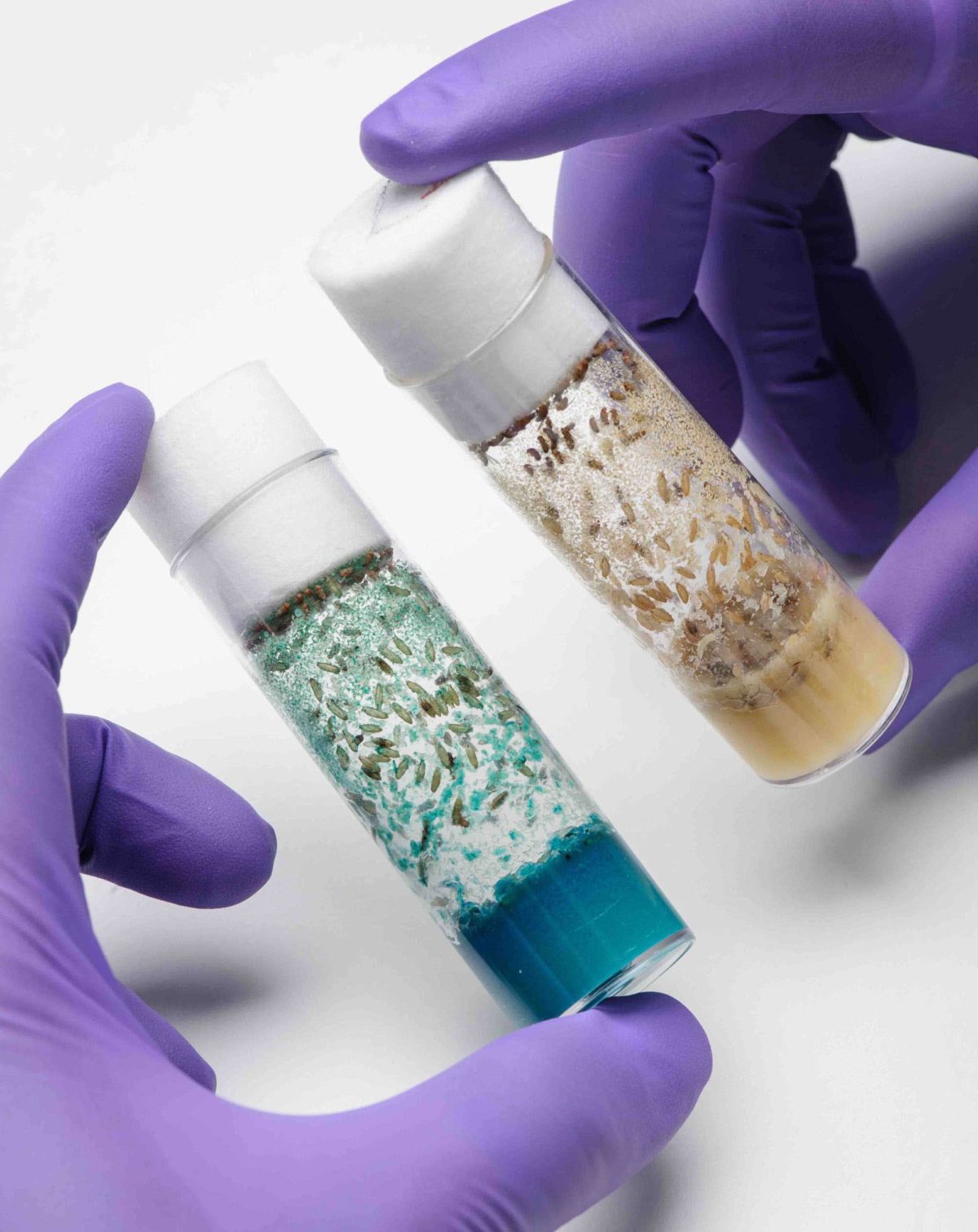
Insects used in scientific experiments are often kept in small containers. To study the effects of spaceflight on complex organisms, NASA often sends fruit flies into orbit for up to 30 days in ventilated tubes like these.
Visual: NASA / Dominic Hart
Yet some scholars have questioned this binary classification. As two philosophers of science, Irina Mikhalevich and Russel Powell, argued in a 2020 commentary, lumping invertebrates together reflects an outdated interpretation of evolution as a ladder of increasing complexity where spineless creatures rank lower. This idea is morally inconsistent with a growing body of research on the cognitive abilities of insects and certain other invertebrates. Whether an animal has a spine shouldn’t be the criterion for its moral status, said Mikhalevich: “It should be what kind of capacities they have to suffer, to experience joys, pleasures, pains.”
Some countries have acknowledged this for a group of invertebrates called cephalopods, comprising octopuses, squid, cuttlefish, and nautiluses. Cephalopods, which are popular subjects in neuroscience, are known for their intelligence and large, complex nervous systems. They also meet the behavioral criteria some scientists use to determine sentience, including experiencing pain, Mather said. For instance, evolutionary neuroscientist Robyn Crook at San Francisco State University has found that octopuses will cradle an injured arm, swim towards areas of a tank doused in pain-numbing substances like lidocaine, and avoid locations where they’ve previously experienced harm. In recent decades, Canada, Australia, the European Union, and New Zealand have granted cephalopods similar protections as vertebrates. (Cephalopods are not protected under U.S. law but many university ethical committees nevertheless treat them like vertebrates.)
Although crustaceans — including crab, lobster, and crayfish — generally have much smaller brains than cephalopods, there’s similarly strong evidence that they also experience pain, Crook said. Because of this, a few countries have also included certain crustaceans under the regulatory umbrella. This happened most recently in the United Kingdom after a group of philosophers tasked by British lawmakers concluded that these species are sentient, a recognition long called for by some advocacy groups. In particular, some crustaceans can suppress pain in exchange for a reward, suggesting that their reaction to harmful things isn’t purely a reflex: Hermit crabs, for instance, tend to abandon a poor-quality shell upon receiving an electric shock, but they’ll tolerate the shock for an especially attractive shell.
A2021 review counted only one country — Norway — that regulates research on insects, namely honeybees. But Chittka and others argue that, much like cephalopods and crustaceans, insects also exhibit sentience and should be similarly protected. For instance, in recent experiments of Chittka’s that are yet to be peer-reviewed, he observed bumblebees making similar trade-offs as hermit crabs, choosing to sit on a very hot surface if it contained a particularly sweet dollop of sugar water.
Other scientists still think that many insect behaviors are more consistent with robot-like reflexes. In the 1960s, British researchers showed that decapitated cockroaches moved their legs to avoid an electric shock. Similarly, locusts will continue feeding while being eaten by predators, while cockroaches have been observed devouring their own guts. “I think this shows insects don’t have the same sense of self, minimally,” remarked Shelley Adamo, a behavioral physiologist at Dalhousie University. While auto-cannibalism isn’t unusual in the insect world, she said, that doesn’t necessarily mean insects don’t react to painful stimuli. “But hunger may trump that,” she continued. “And they don’t have the cognition to recognize and look and go, ‘Oh my gosh, that’s me. They just say ‘protein, eat.’” In addition, Adamo doubts that tiny insect brains — similar in size and complexity to crustacean brains — can support the neural infrastructure required for rich, subjective experiences. But perhaps, Mather added, size isn’t a good indicator for cognitive capabilities in insects.
As it stands, most scientists probably don’t see a need to make ethical considerations with insects, said evolutionary biologist Chris Freelance of the University of Melbourne. But he sees an ethical responsibility to take a precautionary approach — that is, to treat them as if they do feel pain until proven otherwise. After all, he said, “we would absolutely adopt the precautionary principle if it was a fluffy furry thing or something with feathers.” In 2019, Freelance published ethics recommendations for other insect researchers, including adopting a widely-used framework in vertebrate studies called the 3R guidelines: Use other models, such as dead insects, wherever possible (replacement), use only the numbers strictly necessary (reduction), and avoid or minimize experiments that could cause pain (refinement).
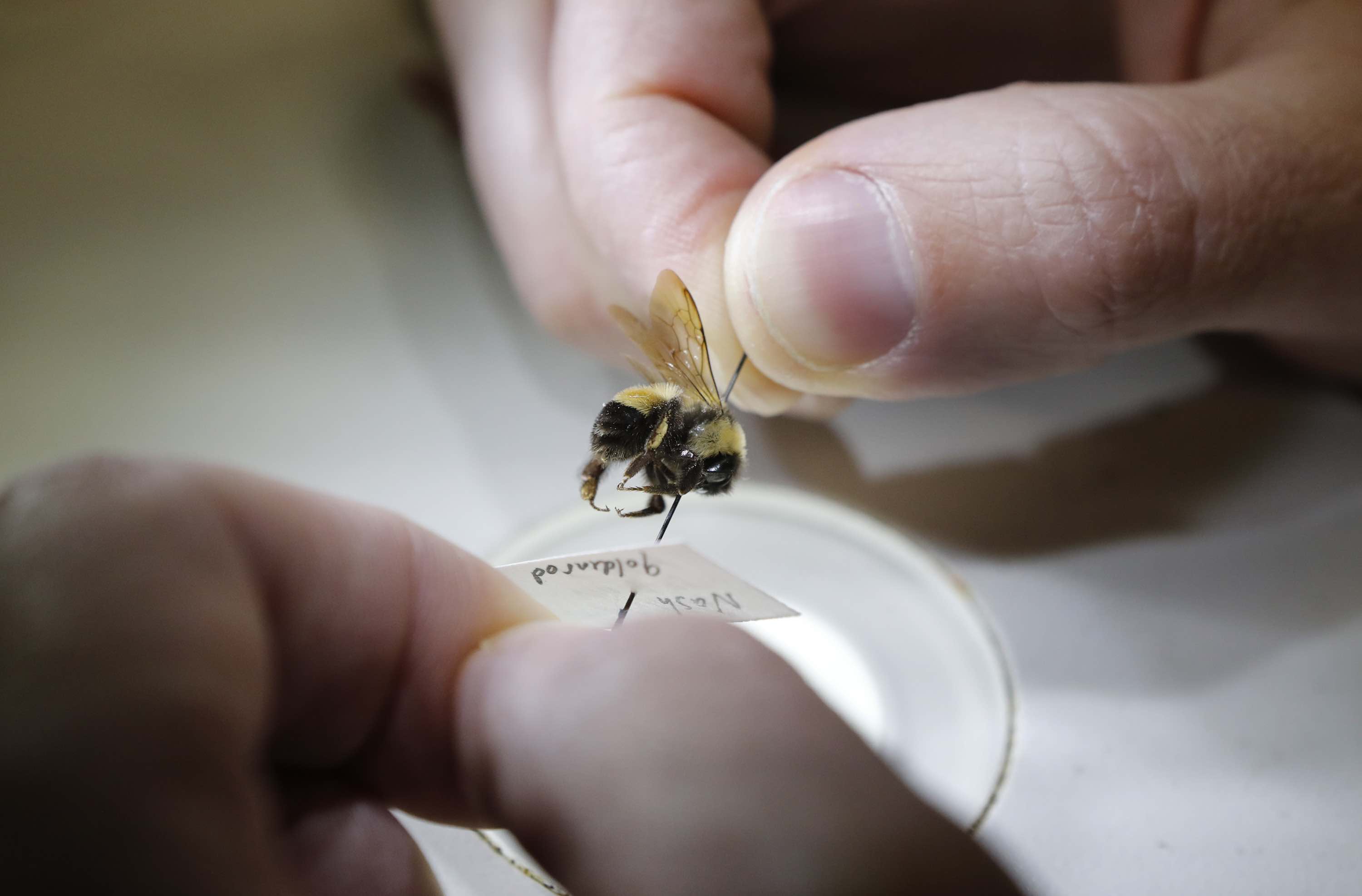
Even neuroscientist Matthew Cobb of the University of Manchester, who said he doubts insects are conscious, on principle tries to limit harm to the fruit flies he studies. In the past he has let excess flies, which hadn’t been genetically altered, buzz out the window instead of killing them. And when he does have to euthanize flies, instead of drowning them in alcohol — which “looks kind of sad,” he said — he’ll put them into a chill coma in a fridge. If anything, he added, allowing animals to live as naturally as possible could help produce better-quality data.
Such moral predicaments are acute in entomology, which frequently involves trapping, killing, and dissecting wild insects in order to properly identify them — often as part of studies that inform conservation efforts. But some entomologists have begun to question the approach, Hart said. He’s cut down on training students in the Victorian era-practice of killing large numbers of insects and sticking them on pins, only doing so upon request. In 2019, Hart and his colleagues also encouraged using the 3R framework in entomological research, alongside using non-lethal and selective traps to avoid catching non-target species. The guidelines were partly motivated by what he sees as mounting interest among the public — at least in the U.K. — in the welfare of insects.
But does it matter how insects are treated in science, when, every day, agricultural insecticides kill countless pests and people swat fruit flies and cockroaches in their kitchens? Cobb argued that, yes, research should be subjected to higher ethical standards, for one because, in his view, the public — who funds most research — are particularly concerned about the welfare of lab animals. Another difference is that research scientists deliberately experiment on individual animals, rather than indiscriminately spraying fields. Crook added that, unlike in agriculture, scientists only interact with a few animals at a time, so they can afford to treat them as humanely as possible.
The question, then, becomes what those ethical standards should look like. Some scientists, including Chittka, argue that insects should receive some form of regulatory protection — although, as Mather added, not necessarily the same protection as granted to vertebrates; each species is different and deserves the protection that fits it best, she said.
The European Union’s 2011 decision to expand vertebrate protections to cephalopods showed the challenges with a one-size-fits-all approach, as the laws encouraged the use of anesthetic substances to both immobilize subjects and curb their pain — even though there were no known anesthetics for the animals at that time. And while scientists can identify when lab rats are in pain, it’s not yet clear how to do the same with insects (if they do feel pain), let alone how to lessen suffering, Freelance said: “There would be no possible way you could comply with those regulations.”
From Crook’s point of view, regulations should be as cautious and as specific to the cognitive abilities of each species as they can be. There might be appropriate ways of protecting invertebrates with even simpler nervous systems, like sea slugs or worms. “I think it would be good to move towards a slightly more expansive way of considering animal welfare and ethics,” she said, “that perhaps takes into account that animals are not all or nothing, and there’s probably shades of experience out there.”
But she acknowledged that more regulation might be a hard sell in the U.S. in particular, which has even exempted some vertebrates like lab rats from regulation. Nor is the idea popular among scientists who have recently switched to using invertebrate models to avoid what Freelance describes as “overwhelming” bureaucracy in vertebrate science. A greater regulatory burden on researchers would only stifle scientific innovation in the eyes of Kirk Leech, the executive director of the European Animal Research Association, which advocates for animal research. To him, the moral case for using animals in science — especially vertebrates, which he considers more useful research subjects — should be prioritized.
Indeed, precautionary regulation could come at a big cost if it ends up restricting work relevant to human welfare, like curbing disease-causing pests, Adamo added, whose research includes finding efficient ways to kill ticks. For pests, she said “we want to be careful that we don’t put barriers in the way of regulating insect populations, because if we don’t, humans that we know suffer will suffer terribly.”
Perhaps, Freelance suggested, scientific journals could create a new path forward. Most journals already require their authors to follow laws and ethical requirements in their own countries, but some have gone a step further. The journal Animal Behavior, one of the leaders in its field, has created its own ethical principles — even for some invertebrates — regardless of whether study subjects are legally protected. If more journals adopted such standards, that could encourage more scientists to adapt, Freelance said via email, “as their publication options would be very limited if they decided to follow no ethical standards at all when it came to studying insects.”
Compared to legislators, journal editors would be more flexible in setting ethical standards, too, ensuring that they are feasible for scientists and could adapt to new understanding of invertebrate consciousness. Aaron Ellison, the executive editor of the journal Methods in Ecology and Evolution, which published Hart’s paper, agreed there could be a role for journals in raising the ethical standards. However, he added, “I don’t know if there is enough support yet in the community to require it.”
In the meantime, cultural changes might influence the way researchers handle invertebrates, Adamo said. Although she doesn’t believe the insects in her lab are conscious, she still chills her caterpillars for invasive experiments. Beyond any possible benefits to the caterpillars, she thinks it’s good practice for junior researchers to cultivate respect for the lives in their care, however small. “It almost doesn’t matter what they feel or don’t feel,” she said, “but I think it’s important to just be respectful.”
Katarina Zimmer is a science journalist. Her work has been published in The Scientist, National Geographic, Grist, Outside Magazine, and more.










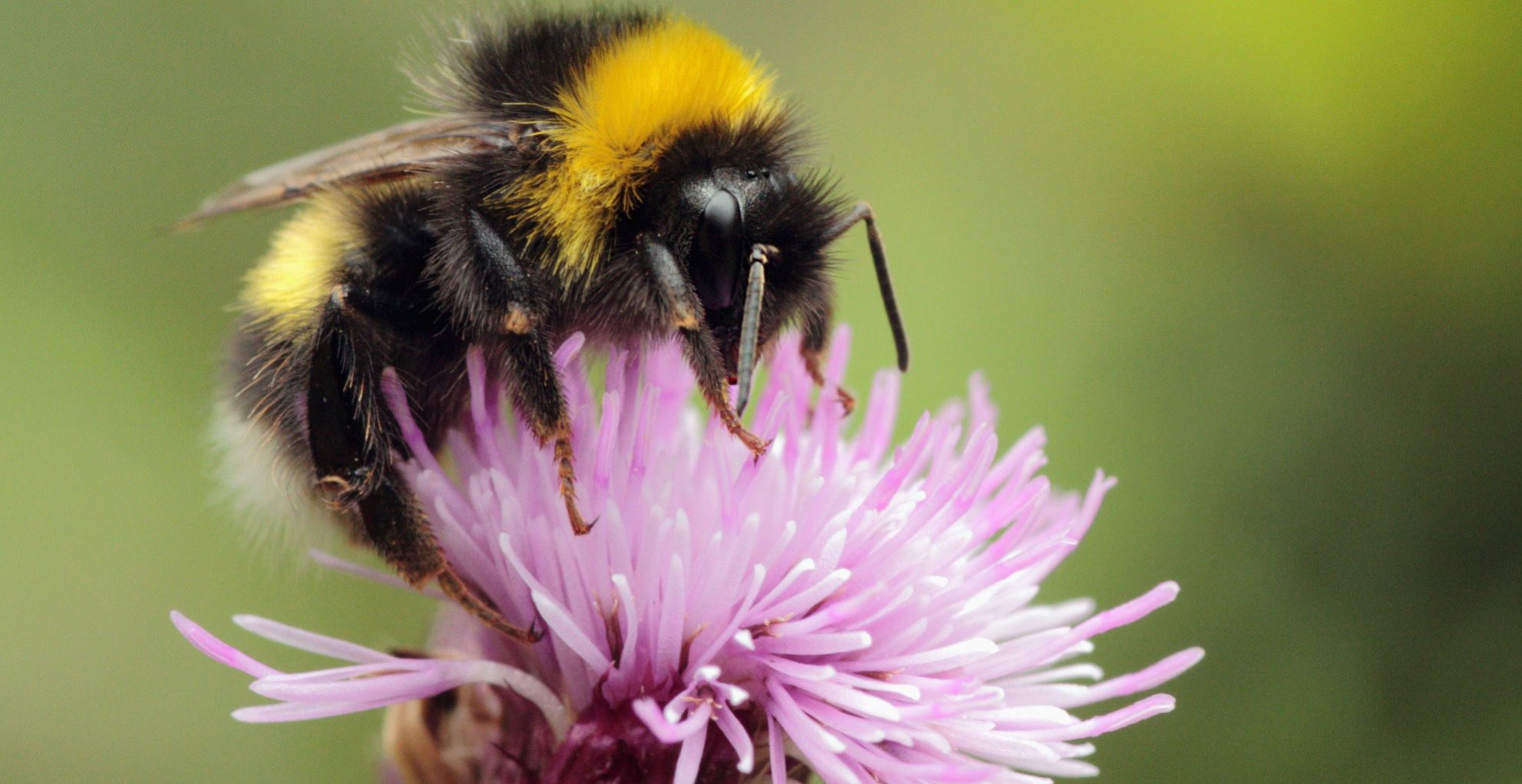
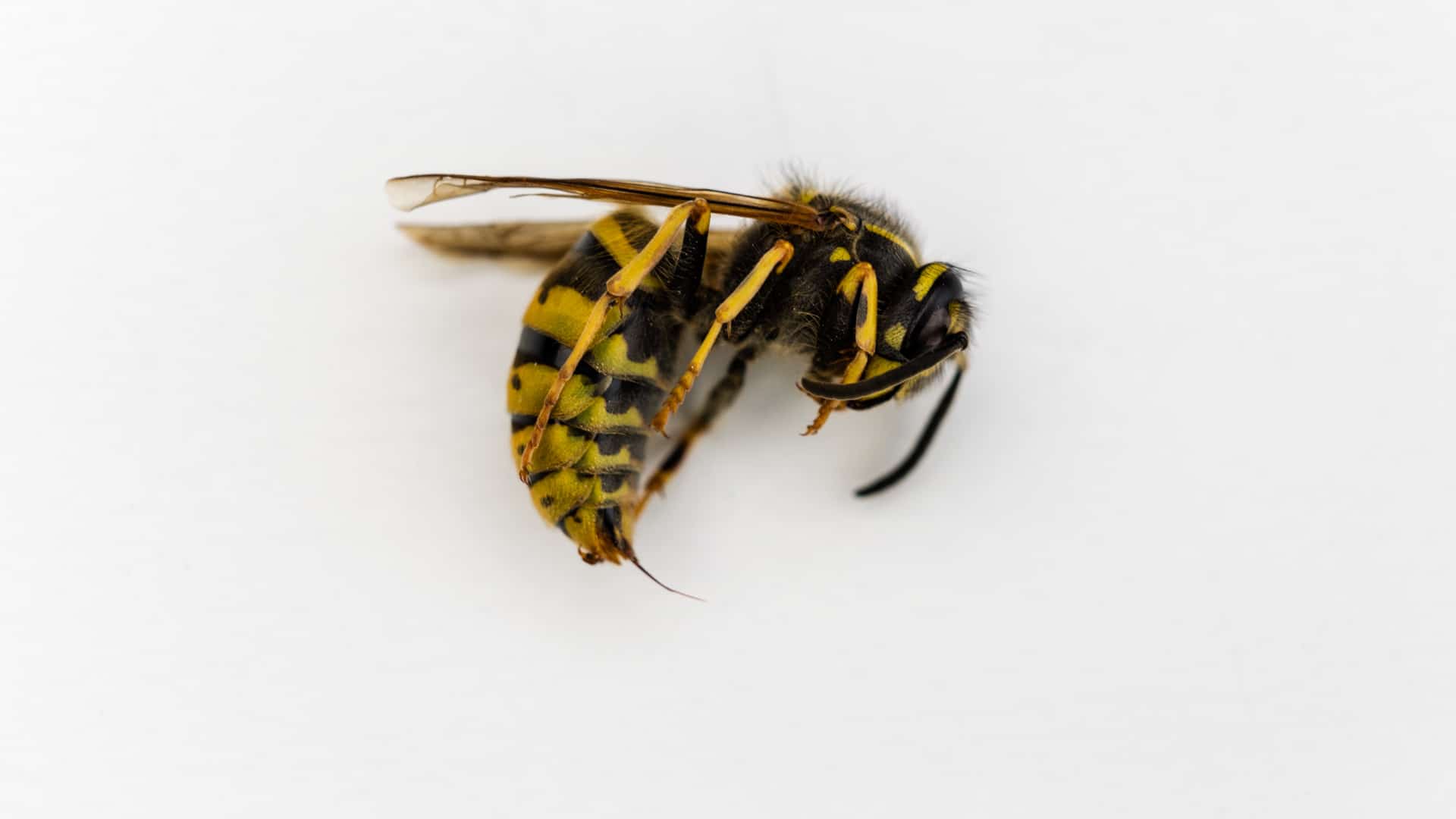
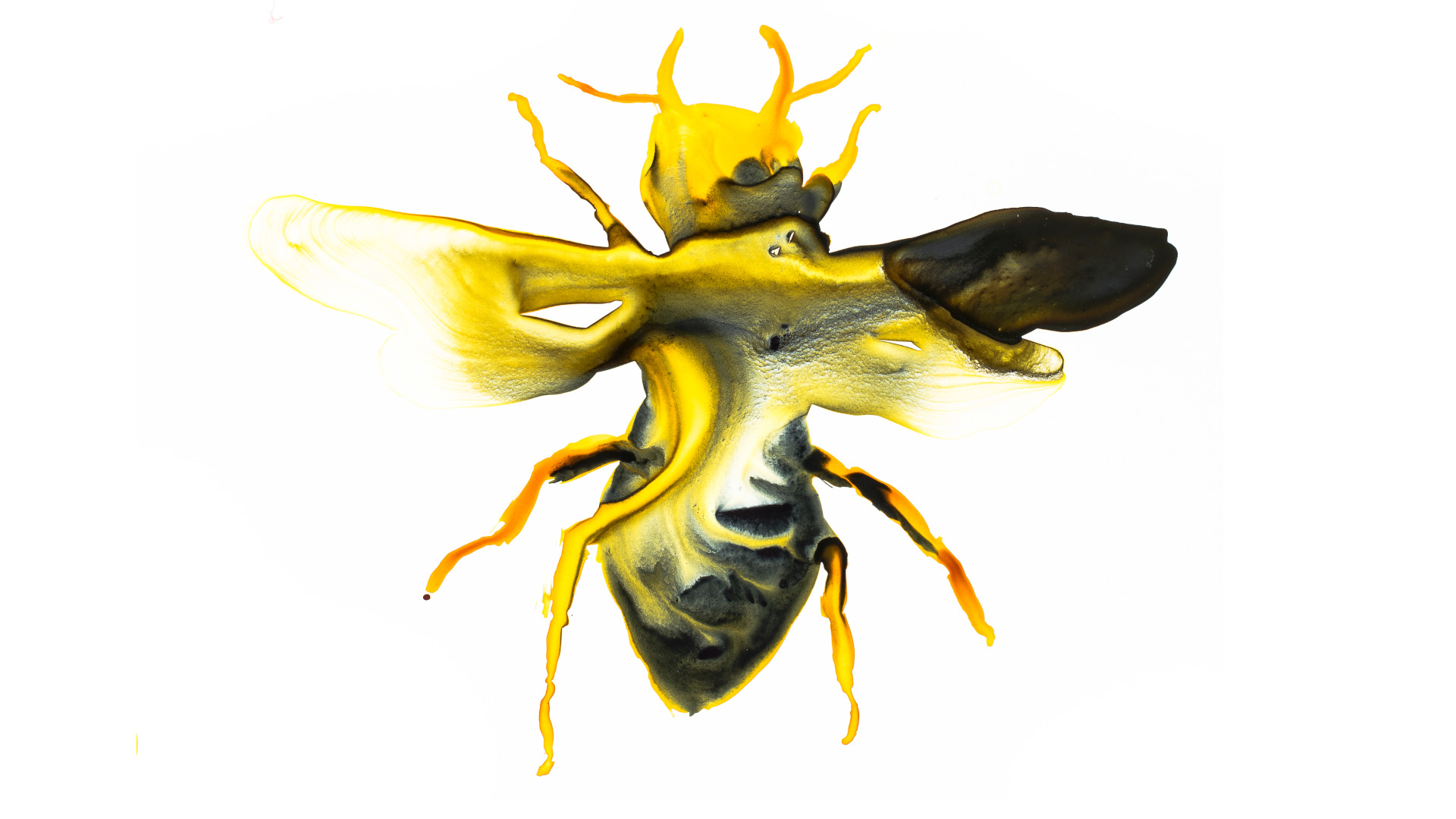
Comments are automatically closed one year after article publication. Archived comments are below.
Good to see you here, it is me Sariyah Bouchard, I am happy that you came here. My hometown is Micronesia, however now I live in Pereirama. I love this new place. Looking for more details? Well, my job is freight forwarder, from time to time I love to learn more about beachcombing. Do you love music?
psychopathy includes researchers and doctors. We’re only 100 yrs from eugenics.
Thank you for this provocative and stimulating article…we are all tied together by a common thread.